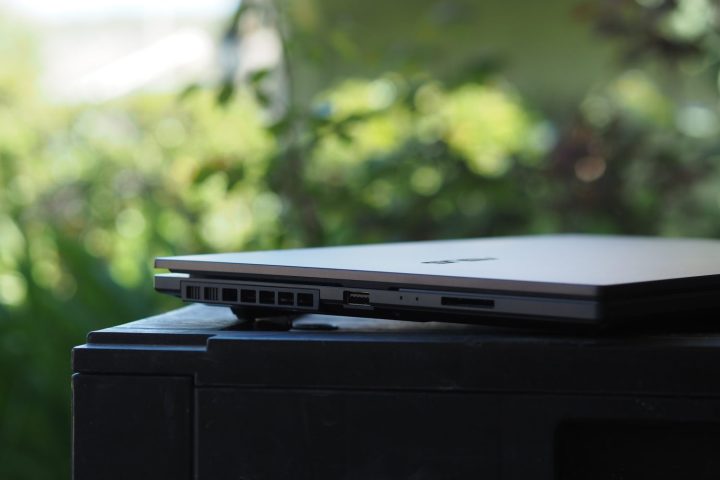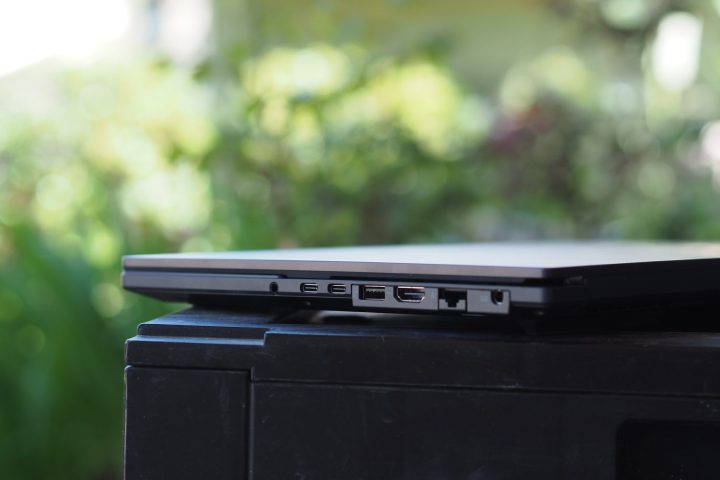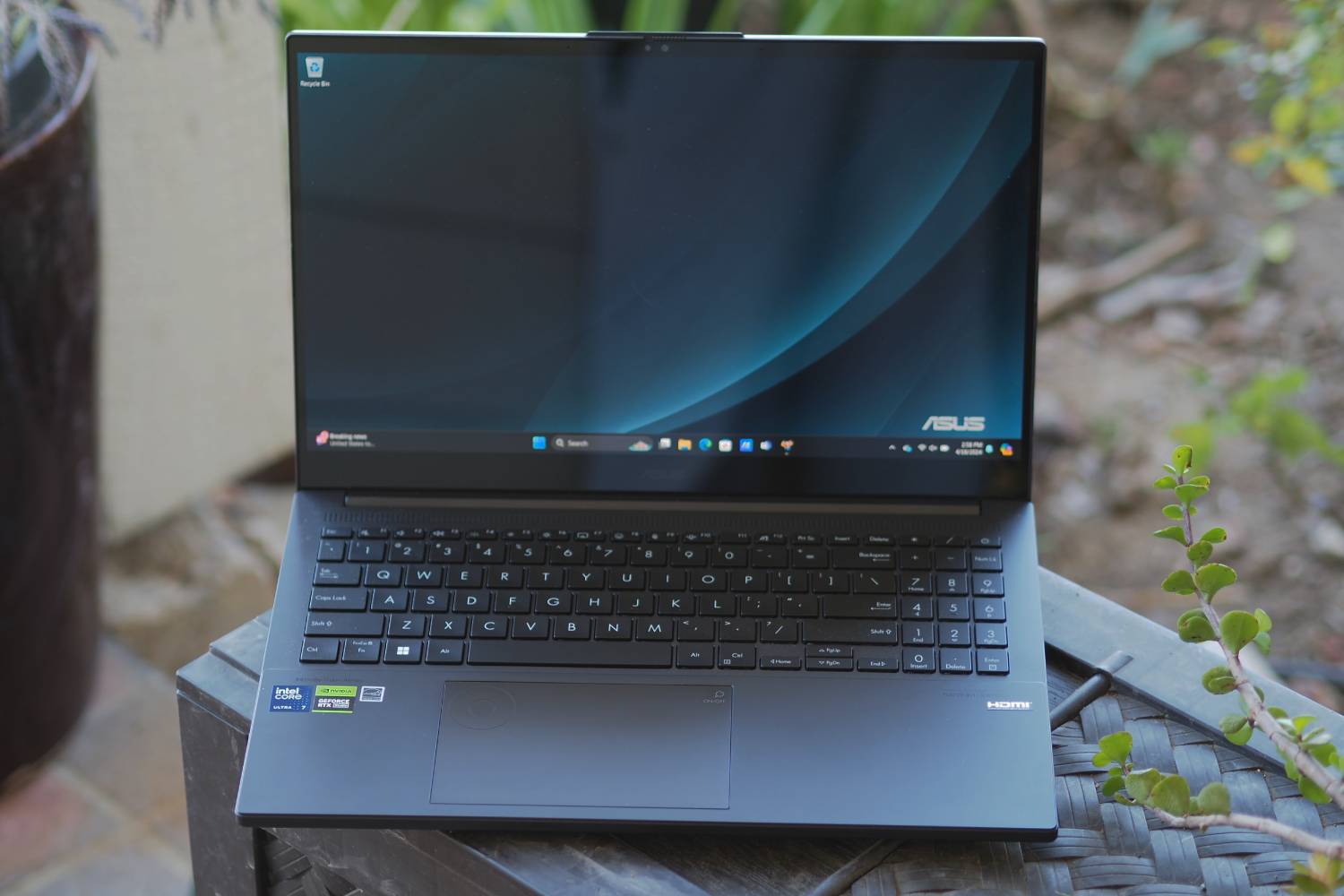
Asus Vivobook Pro 15 OLED Q533
MSRP $1,050.00
“The Asus Vivobook Pro 15 OLED is surprisingly fast and equally affordable.”
Pros
- Attractive price
- Reasonably small and lightweight
- Surprisingly fast performance
- Good OLED colors and contrast
- Decent battery life
Cons
- Display is 16:9 and low-res
- Asus DialPad is sort of gimmicky
When you’re making a larger laptop today that’s aimed at video editors and photographers, you need to do something special. You can build around a spectacular display, an innovative design, really fast components, or special input devices. Or, you can choose OK components and offer a really attractive price.
That’s what Asus did with the Vivobook Pro 15 OLED Q533. It’s not the most spectacularly configured laptop and it has some old-school components. But it’s fast, reasonably well-built, and more affordable than most large laptops for creators at $1,050. For less demanding users, it’s a solid choice.
Specs and configurations
| Asus Vivobook Pro 15 OLED Q533 | |
| Dimensions | 14.0 inches x 9.26 inches x 0.78 inches |
| Weight | 4.19 pounds |
| Processor | Intel Core Ultra 7 155H |
| Intel Arc graphics Nvidia GeForce RTX 3050 |
|
| RAM | 16G DDR5 |
| Display | 15.6-inch 16:9 FHD (1920 x 1080) OLED non-touch, 60Hz |
| Storage | 1TB SSD |
| Touch | No |
| Ports | 1 x USB-C with Thunderbolt 4 1 x USB-C 3.2 Gen 2 1 x USB-A 3.2 Gen 1 1 x HDMI 2.1 1 x RJ45 Gigabit Ethernet 1 x 3.5mm audio jack 1 x card reader |
| Wireless | Wi-Fi 7 and Bluetooth 5.4 |
| Webcam | 5MP with infrared camera for Windows 11 Hello |
| Operating system | Windows 11 |
| Battery | 75 watt-hours |
| Price |
$1,050 |
Asus has one version of the Vivobook Pro 15 OLED available, with an Intel Core Ultra 7 155H CPU, 16GB of DDR5 RAM, a 1TB SSD, an Nvidia RTX 3050 GPU, and a 15.6-inch 16:9 FHD OLED display. Right now, it’s on sale for $1,050, down from $1,300. As long as it stays there, it’s an interesting large-screen laptop for creators on a very tight budget.
There aren’t many 15-inch or larger laptops with a discrete GPU (even an older one) for so little money. The XPS 16 starts at $1,999 with the same GPU and RAM, a smaller SSD, and a newer RTX 4050, while the HP Envy 16 is $1,850 with an Intel Core i7-13700, an RTX 4060, and an IPS display. Even the smaller XPS 14 is considerably more expensive at $2,099 with an RTX 4050. Then again, there aren’t many laptops these days selling the previous-gen RTX 3050 either.
Battery life
There’s a 75 watt-hour battery packed inside, and the relatively low resolution of the otherwise power-hungry OLED display helped the Vivobook Pro 15 OLED turn in some mixed battery life results.
In our web browsing test that runs through a series of complex web pages, the Vivobook managed 10.25 hours, which is above average and very good for the Core Ultra 7 155H chipset. It made it to 10.75 hours in our video looping test, which is a little less than average. The XPS 14 hit 8.25 and 10.25 hours with its OLED display and 11.75 and 15 hours with its IPS panel, while the XPS 16’s 4K+ OLED display came in at 5.5 hours for both tests. Asus seems to have threaded a needle with the Vivobook Pro 15 OLED, which might last close to a full day with mixed usage but not much more.
Design
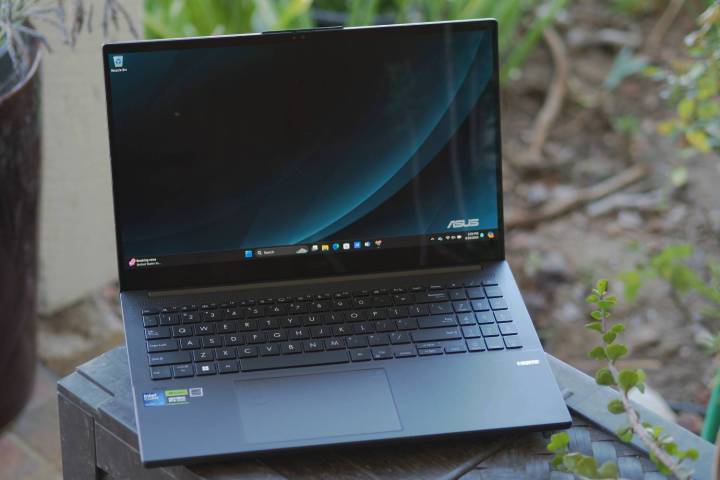
The Vivobook Pro 15 OLED is an old-school laptop in a few important ways. For now, I’ll deal with its design, where the laptop builds around a 15.6-inch display that’s in the older 16:9 aspect ratio. The vast majority of laptops today are in the taller 16:10 aspect ratio that’s better for productivity. While the Vivobook has thin display bezels on the sides, the top and bottom bezels are large by modern standards. That gives it a less than modern appearance and makes for a laptop that’s no smaller than a machine with a bigger display and smaller bezels like the Dell XPS 16 with its 16.3-inch display. As we’ll see, though, the Vivobook is more of a competitor to the smaller XPS 14.
If the display was a cost-cutting measure (I can’t think of another reason), then the plastic chassis is another. Even so, the Vivobook Pro 15 OLED’s construction is very good. It has an aluminum lid and there’s zero bending, flexing, or twisting anywhere. That’s typical for Asus laptops. The Vivobook is a little thicker than the XPS 16 at 0.78 inch versus 0.74 inch, but it’s considerably lighter at 4.17 pounds versus 4.7 pounds. The XPS 14 is thinner and lighter at 0.71 inch and 3.7 pounds, and the HP Envy 16 is the same thickness but almost a pound heavier.
Aesthetically, the Vivobook Pro 15 OLED is a little boring, but that’s OK. It has an all-black chassis that’s entirely minimalist except along the sides, where the ports and vents are most prominent. The keyboard has bold white lettering and offers just a little extra splash. The other laptops I’ve mentioned so far are better looking, but that’s clearly not what Asus was focusing on here.
Keyboard, touchpad, and connectivity
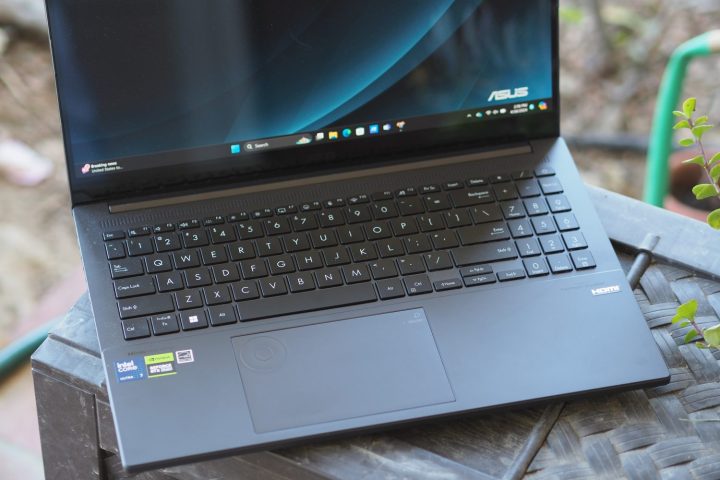
The Vivobook’s keyboard is very good, with large keycaps and plenty of spacing even with the anachronistic numeric keypad. That’s another nod to old-school computing when laptops like the XPS 16 and Envy 16 gave them up. Both of those laptops have speakers to each side of their keyboards while Asus placed them to the sides of the chassis, so that’s one difference.
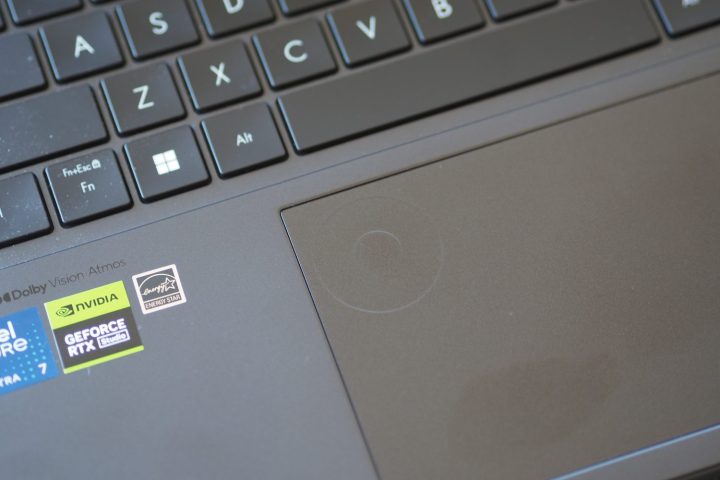
The touchpad is a mechanical version that’s large enough. It works fine, but more and more Windows laptops are moving to haptic versions. I’m looking forward to when the technology makes its way to less expensive machines. What’s more interesting about the touchpad, though, is the embedded Asus DialPad. It’s a slight indentation on the touchpad surface surrounding a button that allows for navigating through functionality in a variety of apps. There’s a more sophisticated Dial in the Asus ProArt Studiobook 16 OLED, but this version is more in keeping with the lower price. It’s a small convenience overall and not a reason to buy the laptop.
Connectivity is very good, with a slew of both modern and legacy ports. There are far more ports than on the XPS 16, in fact, and where Dell’s much more expensive laptop uses a microSD card reader, Asus included a full-size version that’s a lot more convenient. Wireless connectivity is the latest widely-used standard.
The 5MP webcam is a slight step above the increasingly standard 1080p versions, and it provides a quality image with AISense camera and noise cancellation technology. The laptop’s Meteor Lake chipset includes a Neural Processing Unit (NPU) that’s supported by Microsoft’s Studio Effects utility for videoconferencing.
Performance

Another way that the Vivobook Pro 15 OLED is stuck in the past is in its use of an Nvidia GeForce RTX 3050, which is a generation old. Asus used a current-gen Intel Core Ultra 7 155H, so the RTX 3050 was an odd choice (more cost-cutting?). The Core Ultra 7 155H is a 28-watt Meteor Lake chipset with 16 cores (six Performance, eight Efficient, and two Low Power Efficient) and 22 threads, and it features the NPU mentioned above. Right now, the NPU doesn’t affect performance, but we’ll see how that changes over the next year or two.
One thing I’ll note is that although the chassis didn’t get hot, the fans were very loud in performance mode. They were louder than the fans on the XPS 16 and XPS 14 by a significant margin. So, if you need to work in a quiet environment, that’s something to keep in mind.
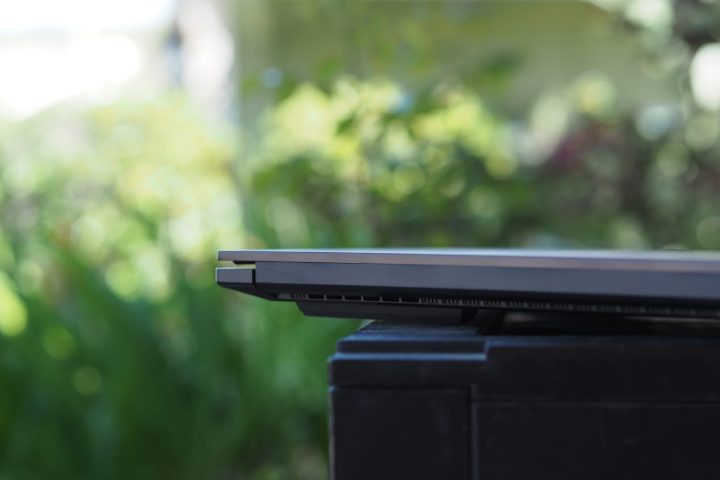
Nevertheless, the Vivobook did a lot with its components. It’s one of the faster laptops we’ve reviewed with the Core Ultra 7 155H. Its RTX 3050 was, unsurprisingly, slower than the RTX 4050 in the XPS 14 in synthetic benchmarks, but it was still reasonably faster than integrated graphics. In our CPU-intensive benchmarks, the Vivobook was at least as fast as more expensive machines. In a couple of tests, it was a bit faster. It fell behind the XPS 14 in the GPU portion of Cinebench R24, but interestingly, it was faster in the 3DMark Time Spy test.
Given that last result, I’m not surprised at the Vivobook’s performance in the Pugetbench Premiere Pro benchmark that runs in a live version of Adobe’s Premiere Pro. On Windows laptops, the benchmark can use a discrete GPU for speeding up various tasks, and that has a significant impact on scores. The Vivobook Pro 15 OLED was 11% faster than the XPS 14, and that showed up in the individual elements of the benchmark.
That makes the Vivobook a good choice for less-demanding creators who want an affordable laptop that provides usable performance. It won’t knock anyone’s socks off but it’ll be faster than laptops without a discrete GPU, and its older GPU doesn’t hold it back. It will also meet very demanding productivity needs. What it won’t do is serve as a gaming laptop for more than esports titles and older games running at 1080p and with reduced graphics.
| Geekbench 6 (single/multi) |
Handbrake (seconds) |
Cinebench R24 (single/multi/GPU) |
Pugetbench Premiere Pro |
|
| Asus Vivobook Pro 15 OLED (Core Ultra 7 155H / RTX 3050) |
Bal: 2,258 / 12,235 Perf: 2,266 / 12,248 |
Bal: 70 Perf: 66 |
Bal: 107 / 884 / 3,888 Perf: 110 / 1001 / 3,932 |
Bal: 4,033 Perf: 4,415 |
| Dell XPS 16 (Core Ultra 7 155H / RTX 4070) |
Bal: 2,196 / 12,973 Perf: 2,238 / 12,836 |
Bal: 72 Perf: 73 |
Bal: 100 / 838 / 9,721 Perf: 102 / 895 / 10,477 |
Bal: 5,401 Perf: 5,433 |
| Dell XPS 14 (Core Ultra 7 155H / RTX 4050) |
Bal: 2,334 / 13,070 Perf: 2,344 / 12,818 |
Bal: 84 Perf: 75 |
Bal: 100 / 772 / 5,811 Perf: 101 / 681 / 5,738 |
Bal: 3,536 Perf: 3,983 |
| HP Envy 16 2023 (Core i9-13900H / RTX 4060) |
Bal: 1,997 / 12,742 Perf: 1,992 / 12,645 |
Bal: 73 Perf: 75 |
N/A | N/A |
| Apple MacBook Pro 16 (M3 Max 16/40) |
Bal: 3,083 / 20,653 Perf: 3,119 / 20,865 |
Bal: 55 Perf: N/A |
Bal: 140 / 1,667 / 13,146 | Bal: 8,046 Perf: N/A |
Display and audio
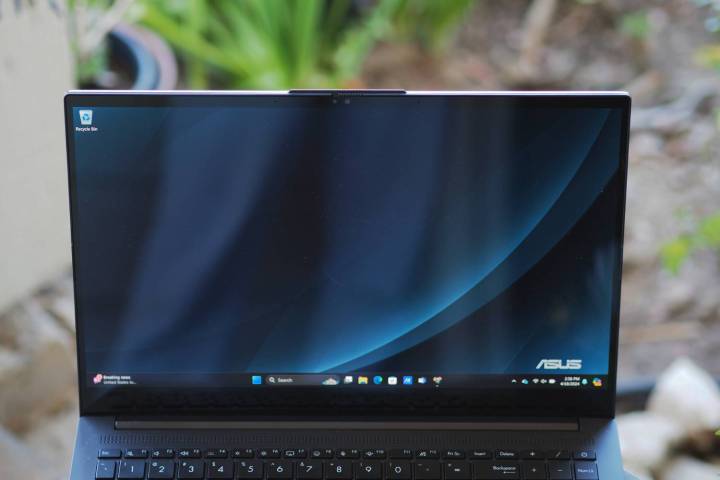
As mentioned earlier, the Vivobook’s OLED display is in the old-school 16:9 aspect ratio that’s not as comfortable for productivity work. And, at just Full HD (1920 x 1080) and 15.6 inches, it’s not sharp enough. But it’s an OLED display, making it a sort of an odd duck among competing laptops.
It’s a very good display even given its limitations. Its colors are wide (100% sRGB, 98% AdobeRGB, 100% DCI-P3) and accurate with a DeltaE of 1.19 (less than 1.0 is considered excellent). It’s also bright at 398 nits and it has OLED’s usual perfect blacks and near-infinite contrast. So, it’s a great display for productivity users and creators alike, as long as they don’t mind a lower-resolution display. Many users might not, given the positive impact on battery life.
Two side-firing speakers provide plenty of volume and clear mids and highs. There was a touch of distortion when turned all the way up, and I had to turn things down to about 50% to tame it. Bass wasn’t very present, so you’ll want to keep a pair of headphones handy, especially when the fans are their loudest. The XPS 14 and XPS 16 both have better sound systems.
A solid value choice among creator laptops
The Vivobook Pro 15 OLED Q533 isn’t the most exciting 15-inch or larger laptop I’ve reviewed. It’s not the most modern, it’s not the fastest, and it doesn’t have a single standout feature that made writing this review a lot of fun.
What it does have, though, is a very attractive price and enough performance and display quality for anyone who wants to do some lightweight creative work on the go. You could spend a lot more and get a much better laptop. But, you don’t have to when you can spend a lot less for more than good enough.
Editors’ Recommendations


